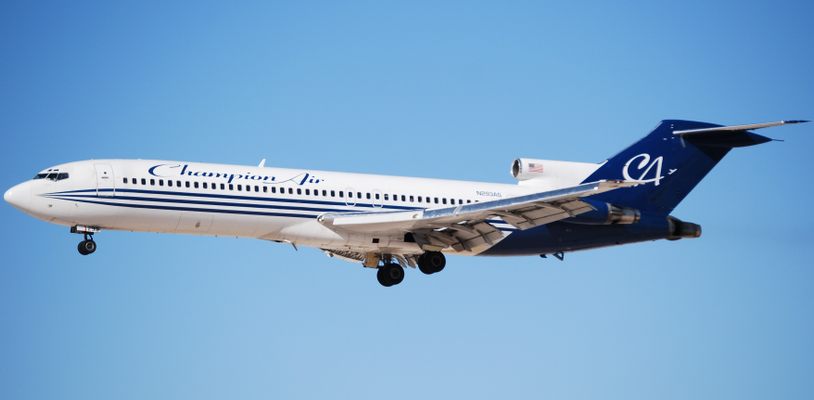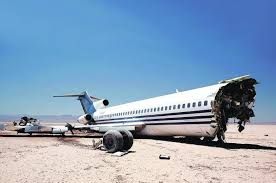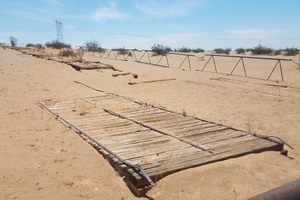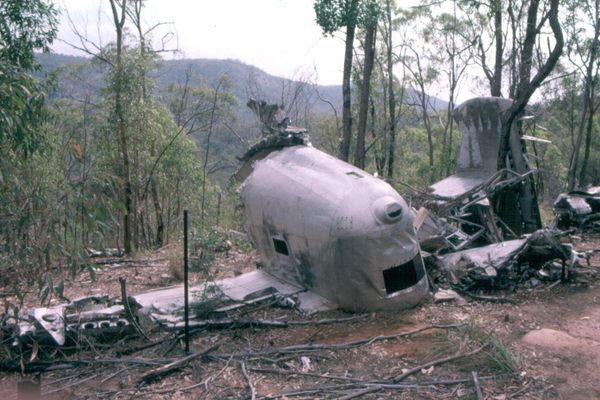About
At around 10 a.m. on the morning of April 27, 2012, silence in the vast and empty Laguna Salada desert was shattered as a Boeing 727 slammed into the ground. The impact tore the cockpit apart and debris flew across the sandy landscape. Then, just as quick as it started, the eerie silence of the desert descended on the wreckage. A few miles away, observing the crash, a team of scientists erupted with applause. They had successfully pulled off their experiment.
These scientists were a team of airplane crash investigators. In the same way that cars are deliberately crashed into walls to test their safety features, this team planned to crash a plane to test airline safety and possibly improve upon aircraft safety standards. The crash was also filmed for the Discovery Channel show Curiosity.
A plane was chosen and a crash site selected, and in April 2012 the team put their test into effect. The morning of the test, the plane, (nicknamed "Big Flo") took off for her final flight, the last words from air traffic control to the plane being an innocent, but ominiously final: "Bye-bye."
Over the course of the flight, the small team onboard turned on all the data-collecting equipment before, one by one, bailing out of the plane and parachuting to the ground. The final person to leave the plane jumped out with only three minutes until Big Flo was set to hit the ground.
Now under the remote control of a chase plane, Big Flo was carefully flown to the ground, before finally smashing down into the Mexican desert at 140 miles per hour. The crash was filmed from cameras around the desert, including some on the plane itself, the footage is nothing short of incredible, yet terrifying to watch.
Although the footage is a scary sight, the data revealed the plane itself absorbed a lot of the impact. Although the cockpit had broken away, the landing gears had sheared off and the bottom of the plane had been pushed up, all of this was within the design of the plane to maximize protection of the passengers.
The data also suggested that most passengers, had there been any onboard, would have survived the impact and some at the back of the plane would even have been able to walk away from the crash unharmed (albeit shaken).
With the test executed successfully and the data recovered, the clean-up operation began. Within a few days, any trace of the crash was wiped from the desert landscape. The plane wreckage was then moved from the desert to a small spot by the side of Federal Highway 5, just south of the city of Mexicali, Mexico. To this day, the plane remains, a mangled mess of no significance. Although most people passing by wouldn't know it, the twisted plane wreckage collecting dust played a significant part in aviation science.
Related Tags
Flavors of Oaxaca: Markets, Mezcal & Home-Cooked Meals
A Culinary and Cultural Journey Through Oaxaca.
Book NowCommunity Contributors
Added By
Published
November 1, 2023
Sources
- https://newsfeed.time.com/2012/10/07/discovery-channel-crashes-a-jet-plane-on-purpose/
- https://simpleflying.com/deliberate-boeing-727-crash/
- https://interestingengineering.com/science/boeing-727-crashed-deliberately-for-science
- https://www.youtube.com/watch?v=FlX8KsSXg4s&t=2879s
- https://en.wikipedia.org/wiki/2012_Boeing_727_crash_experiment






















